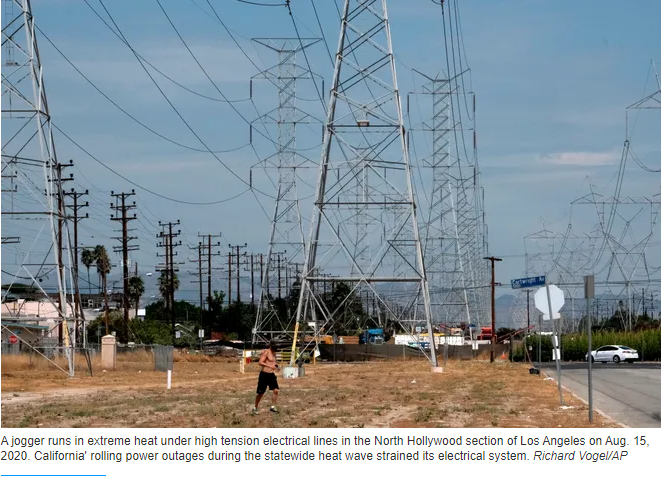California’s blackout déjà vu – and the need for more generation and sufficient storage

A feeling of déjà vu crept over me when reports of rolling blackouts swept across the state – like I’d seen this show before.
I was with Southern California Edison in the early 2000s when market manipulation by Enron and others created an energy crisis that toppled a governor.
Many things have changed, but the results are the same.
Rather than corporate greed, these blackouts were triggered by a system, planned for normal events, that hasn’t kept up. An overreliance on wishful thinking and under-reliance on planning and engineering has left hundreds of thousands of Californians in the dark during rolling blackouts.
This could have been avoided.
But at this point, it doesn’t matter who’s wrong. It matters what’s wrong.
Renewable power, primarily solar and wind, are the least cost and best energy resource, but are subject to the vagaries of climate. There is plenty of renewable power during the day (we need to store as much as possible during these periods), but at night, the sun goes down and winds are often calm. That’s a problem for the electric grid if there is not sufficient storage or generation to pick up the load.
Further complicating the picture – people’s peak electric use has shifted from mid-day to early and mid- evening, just as our solar resources are ending production.
We need a better-engineered system that will work when people need to use power.
Right now, our grid lacks the flexibility to adjust to severe weather events – not just heat but monsoon conditions that reduce renewable output – as utility customers up and down the state found out when their lights went out last weekend.
Let’s also not forget that a warming planet is only going to make these types of extreme weather events more regular. We need to stop planning for normal conditions and start planning for our new normal, which is anything but.
The California Public Utilities Commission has delayed retirement of coastal power plants and accelerated deployment of some short duration batteries. That is a good start, but it wasn’t enough to keep the lights on and air conditioners running. And it is far from enough to meet our future needs.
Our energy grid needs additional generation in reserve, and it needs more storage that can dispatch energy for longer periods of time.
I am an ardent advocate of renewable energy and energy conservation. I see our future based primarily on renewable fuels. I have driven an electric vehicle for nearly two decades and drafted early state laws around energy efficiency standards for buildings and appliances. I was an executive at Edison when we voluntarily set a standard for renewable energy. As a former chair of the Independent System Operator, utility executive and mayor, I have a strong track record in pushing for reducing fossil fuels.
But we will not succeed in our push to reduce carbon if we can’t do it while keeping the lights on for Californians.
We must improve our generation capacity, build the infrastructure to store clean energy when it is abundant and be able to dispatch that energy over longer periods, not just short bursts. Most important we need to have a well-engineered plan for extreme events caused by weather or machine failure.
Our planning and policies did not hold up to the real-world challenge. It’s time for our state’s energy regulators and leaders to plan based on physics rather than wishful thinking.
Bob Foster is the former chair of the California Independent System Operator, president of Southern California Edison and mayor of Long Beach, Legionary44bc@icloud.com.
